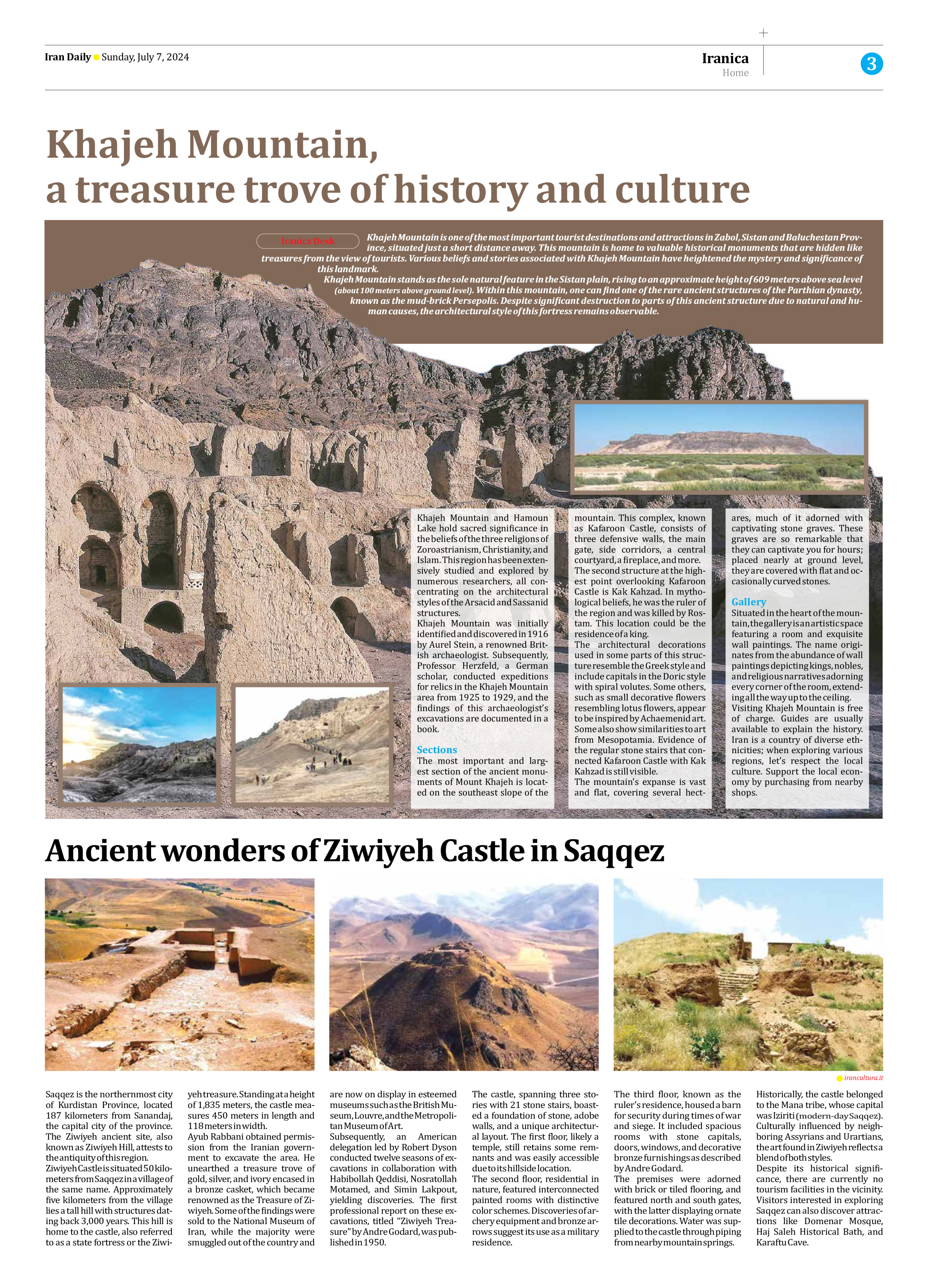
Khajeh Mountain, a treasure trove of history and culture
Khajeh Mountain is one of the most important tourist destinations and attractions in Zabol, Sistan and Baluchestan Province, situated just a short distance away. This mountain is home to valuable historical monuments that are hidden like treasures from the view of tourists. Various beliefs and stories associated with Khajeh Mountain have heightened the mystery and significance of this landmark. Khajeh Mountain stands as the sole natural feature in the Sistan plain, rising to an approximate height of 609 meters above sea level (about 100 meters above ground level). Within this mountain, one can find one of the rare ancient structures of the Parthian dynasty, known as the mud-brick Persepolis. Despite significant destruction to parts of this ancient structure due to natural and human causes, the architectural style of this fortress remains observable.
Khajeh Mountain and Hamoun Lake hold sacred significance in the beliefs of the three religions of Zoroastrianism, Christianity, and Islam. This region has been extensively studied and explored by numerous researchers, all concentrating on the architectural styles of the Arsacid and Sassanid structures.
Khajeh Mountain was initially identified and discovered in 1916 by Aurel Stein, a renowned British archaeologist. Subsequently, Professor Herzfeld, a German scholar, conducted expeditions for relics in the Khajeh Mountain area from 1925 to 1929, and the findings of this archaeologist’s excavations are documented in a book.
Sections
The most important and largest section of the ancient monuments of Mount Khajeh is located on the southeast slope of the mountain. This complex, known as Kafaroon Castle, consists of three defensive walls, the main gate, side corridors, a central courtyard, a fireplace, and more.
The second structure at the highest point overlooking Kafaroon Castle is Kak Kahzad. In mythological beliefs, he was the ruler of the region and was killed by Rostam. This location could be the residence of a king.
The architectural decorations used in some parts of this structure resemble the Greek style and include capitals in the Doric style with spiral volutes. Some others, such as small decorative flowers resembling lotus flowers, appear to be inspired by Achaemenid art. Some also show similarities to art from Mesopotamia. Evidence of the regular stone stairs that connected Kafaroon Castle with Kak Kahzad is still visible.
The mountain’s expanse is vast and flat, covering several hectares, much of it adorned with captivating stone graves. These graves are so remarkable that they can captivate you for hours; placed nearly at ground level, they are covered with flat and occasionally curved stones.
Gallery
Situated in the heart of the mountain, the gallery is an artistic space featuring a room and exquisite wall paintings. The name originates from the abundance of wall paintings depicting kings, nobles, and religious narratives adorning every corner of the room, extending all the way up to the ceiling.
Visiting Khajeh Mountain is free of charge. Guides are usually available to explain the history. Iran is a country of diverse ethnicities; when exploring various regions, let’s respect the local culture. Support the local economy by purchasing from nearby shops.







